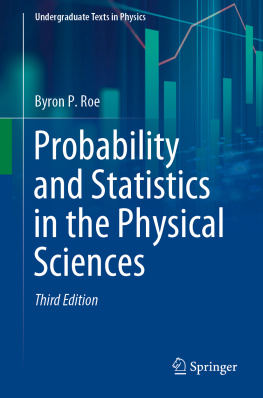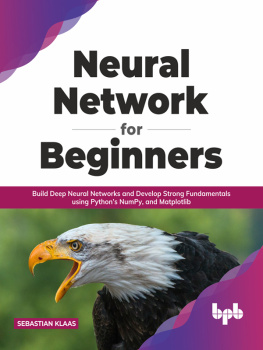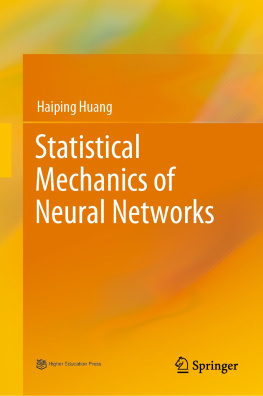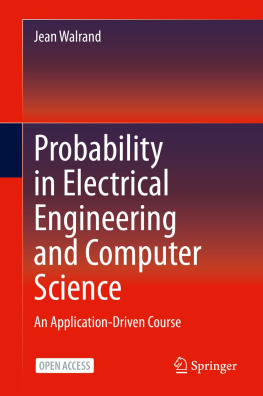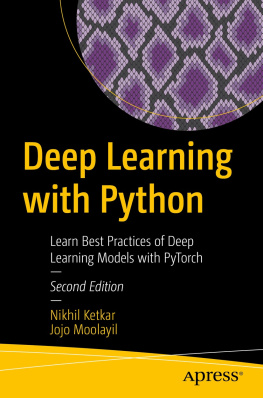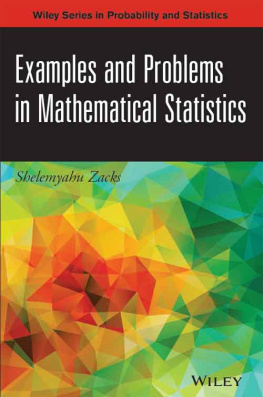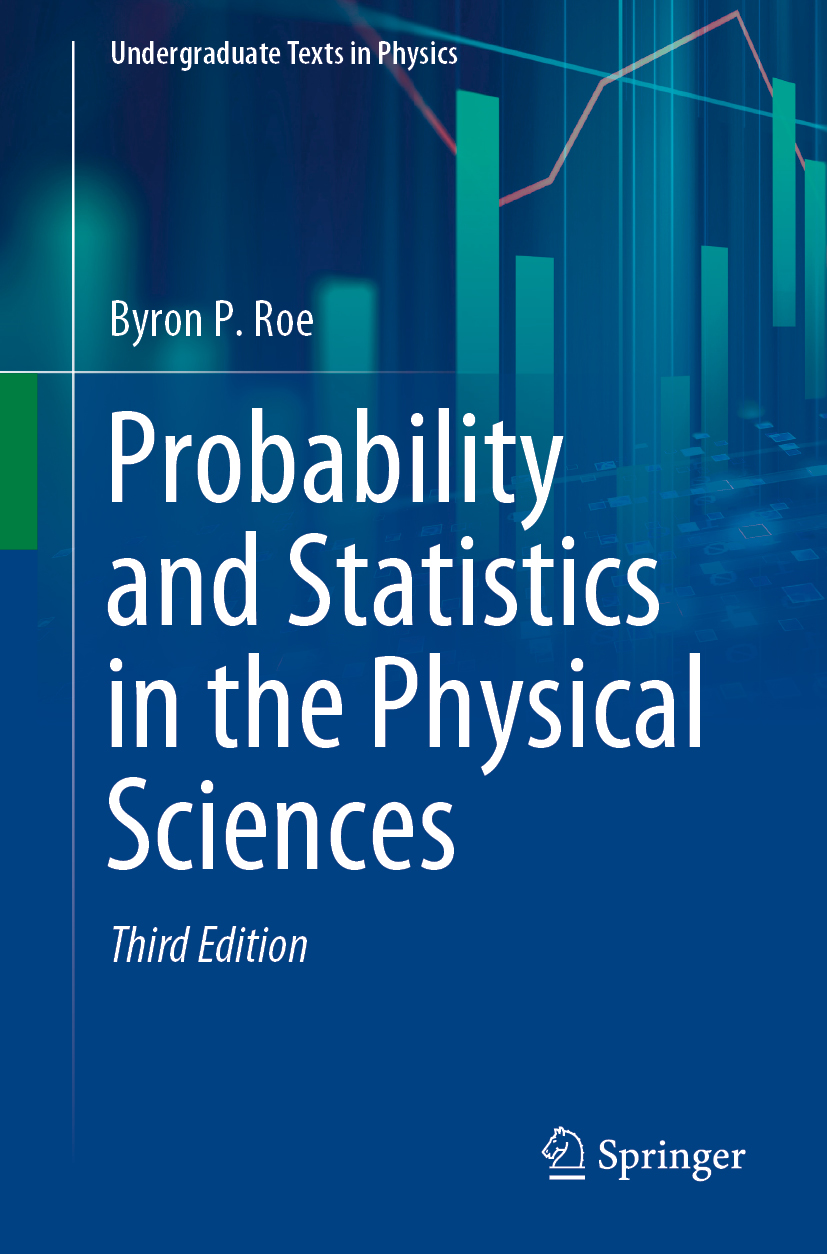Undergraduate Texts in Physics
Series Editors
Kurt H. Becker
NYU Polytechnic School of Engineering, Brooklyn, NY, USA
Jean-Marc Di Meglio
Matire et Systmes Complexes, Universit Paris Diderot, Btiment Condorcet, Paris, France
Sadri D. Hassani
Department of Physics, Loomis Laboratory, University of Illinois at Urbana-Champaign, Urbana, IL, USA
Morten Hjorth-Jensen
Department of Physics, Blindern, University of Oslo, Oslo, Norway
Michael Inglis
Patchogue, NY, USA
Bill Munro
NTT Basic Research Laboratories, Optical Science Laboratories, Atsugi, Kanagawa, Japan
Susan Scott
Department of Quantum Science, Australian National University, Acton, ACT, Australia
Martin Stutzmann
Walter Schottky Institute, Technical University of Munich, Garching, Bayern, Germany
Undergraduate Texts in Physics (UTP) publishes authoritative texts covering topics encountered in a physics undergraduate syllabus. Each title in the series is suitable as an adopted text for undergraduate courses, typically containing practice problems, worked examples, chapter summaries, and suggestions for further reading. UTP titles should provide an exceptionally clear and concise treatment of a subject at undergraduate level, usually based on a successful lecture course. Core and elective subjects are considered for inclusion in UTP.
UTP books will be ideal candidates for course adoption, providing lecturers with a firm basis for development of lecture series, and students with an essential reference for their studies and beyond.
More information about this series at http://www.springer.com/series/15593
Byron P. Roe
Probability and Statistics in the Physical Sciences
3rd ed. 2020
Byron P. Roe
Randall Laboratory, University of Michigan, Ann Arbor, MI, USA
ISSN 2510-411X e-ISSN 2510-4128
Undergraduate Texts in Physics
ISBN 978-3-030-53693-0 e-ISBN 978-3-030-53694-7
https://doi.org/10.1007/978-3-030-53694-7
Springer Nature Switzerland AG 2020
This work is subject to copyright. All rights are reserved by the Publisher, whether the whole or part of the material is concerned, specifically the rights of translation, reprinting, reuse of illustrations, recitation, broadcasting, reproduction on microfilms or in any other physical way, and transmission or information storage and retrieval, electronic adaptation, computer software, or by similar or dissimilar methodology now known or hereafter developed.
The use of general descriptive names, registered names, trademarks, service marks, etc. in this publication does not imply, even in the absence of a specific statement, that such names are exempt from the relevant protective laws and regulations and therefore free for general use.
The publisher, the authors and the editors are safe to assume that the advice and information in this book are believed to be true and accurate at the date of publication. Neither the publisher nor the authors or the editors give a warranty, expressed or implied, with respect to the material contained herein or for any errors or omissions that may have been made. The publisher remains neutral with regard to jurisdictional claims in published maps and institutional affiliations.
This Springer imprint is published by the registered company Springer Nature Switzerland AG
The registered company address is: Gewerbestrasse 11, 6330 Cham, Switzerland
Preface
This book is meant to be a practical introduction to the use of probability and statistics in experimental physics for advanced undergraduate students and for graduate students. I have tried to emphasize the areas I have found to be useful for the experimental sciences. Except for the first two chapters, the emphasis is on applications and understanding. I have omitted proofs of formal theorems in the interests of brevity unless I felt the proof added to ones intuition in understanding and applying the theorem. Since, however, this is a field in which there are often a number of misunderstandings, it is necessary to state some things with reasonable precision. I have tried to do this when necessary.
I assume the student is familiar with partial derivatives and with elementary matrix manipulation. A computer also is a needed tool for probability and statistics in experimental physics and will be used in many of the homework exercises. A large library of important routines for statistical use are available at CERN, the European Organization for Nuclear Research ( https://home.cern ). Given the path to CERN, CERN/root contains this library and has an introduction. Programs are usually written in C++. Among many other things the library includes pseudorandom number routines, histogram routines, minimizing routines, neural net and boosted decision tree routines, and matrix manipulation.
In the interactive mode, the Mathematica software system, available commercially, is also extremely useful.
Any of these systems will require an initial learning effort. However, the reward in terms of problem-solving capability is very great and the investment in time well spent.
In some of the exercises I will provide some hints on the use of the CERN system. A solutions manual is now available.
For the Second Edition, I made a number of changes and additions. Among the most important of these are a new chapter on queueing theory and a discussion of the FeldmanCousins unified method for estimating confidence intervals. Expositions have been added on the fitting of weighted events, the fitting of events with errors in x and y, and a number of other topics.
For the Third Edition, I have added a new chapter on Event Characteristics, including introductions to neural nets, convolutional neural nets (deep learning), adversarial neural nets and boosted decision trees. Major changes and additions have been made throughout the book.
Byron P. Roe
Ann Arbor, USA
Acknowledgements
Many people have contributed to the preparation of this Third Edition. I could not have completed it without their help.
Jean Hue helped enormously in translating some of the old answers to exercises into more modern C++ language. He also carefully read the text from the unique perspective of an undergraduate student for whom some of the material is new. He suggested many very useful changes to clarify or expand sections of the text.
Dr. Johnathon Jordan in our Physics Department has very greatly helped me to understand the new forms for the extensive CERN library using root both to use their sophisticated programs to fit experimental data to theory and to use it to make plots and histograms.
Dr. Charles Antonelli, in the LSA Research Computing Support group, helped me to solve some TeX problems to obtain references by chapter.
Brandon Case in the Physics Department Computing Support group helped me to install the GSL (GNU Scientific Library).
Finally, my colleague, Professor of Physics, Leonard Sander read through my draft and made numerous very useful suggestions.
Contents

